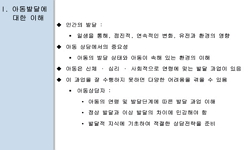Wood filler is a porous and anisotropic material having different size, shape, and aspect ratio. The use of wood fillerssuch as wood particle, wood flour, and wood pulp in wood plastic composites (WPCs) are growing rapidly becausethese wood fillers gi...
http://chineseinput.net/에서 pinyin(병음)방식으로 중국어를 변환할 수 있습니다.
변환된 중국어를 복사하여 사용하시면 됩니다.
- 中文 을 입력하시려면 zhongwen을 입력하시고 space를누르시면됩니다.
- 北京 을 입력하시려면 beijing을 입력하시고 space를 누르시면 됩니다.


Overview of Wood Plastic Composites: Focusing on Use of Bio-based Plastics and Co-extrusion Technique = Overview of Wood Plastic Composites: Focusing on Use of Bio-based Plastics and Co-extrusion Technique
한글로보기https://www.riss.kr/link?id=A100119864
- 저자
- 발행기관
- 학술지명
- 권호사항
-
발행연도
2014
-
작성언어
-
- 주제어
-
KDC
500
-
등재정보
SCOPUS,KCI등재
-
자료형태
학술저널
- 발행기관 URL
-
수록면
499-509(11쪽)
- 제공처
-
0
상세조회 -
0
다운로드
부가정보
다국어 초록 (Multilingual Abstract)
Wood filler is a porous and anisotropic material having different size, shape, and aspect ratio. The use of wood fillerssuch as wood particle, wood flour, and wood pulp in wood plastic composites (WPCs) are growing rapidly becausethese wood fillers give improved strength and stiffness to WPCs. However, the wood fillers have originally poorcompatibility with plastic matrix affecting the mechanical properties of WPCs. Therefore, to improve compatibility betweenwood and plastic, numbers of physical and chemical treatments were investigated. While the various treatmentsled to improved performances in WPC industries using petroleum-based plastics, full biodegradation is still issues dueto increased environmental concerns. Hence, bio-based plastics such as polylactide and polyhydroxybutyrate having biodegradablecharacteristics are being applied to WPCs, but relatively expensive prices of existing bio-based plasticsprevent further uses. As conventional processing methods, extrusion, injection, and compression moldings have beenused in WPC industries, but to apply WPCs to engineered or structural places, new processing methods should bedeveloped. As one system, co-extrusion technique was introduced to WPCs and the co-extruded WPCs havingcore-shell structures make the extended applications of WPCs possible.
동일학술지(권/호) 다른 논문
-
Sound Absorption and Physical Properties of Carbonized Fiberboards with Three Different Densities
- 한국목재공학회
- Min Lee
- 2014
- SCOPUS,KCI등재
-
Dowel-embedment Properties-Based Finite Solid Element Model for Bolted Connections
- 한국목재공학회
- Jung Pyo Hong
- 2014
- SCOPUS,KCI등재
-
- 한국목재공학회
- Yo Jin Song
- 2014
- SCOPUS,KCI등재
-
- 한국목재공학회
- Tae Hong Kim
- 2014
- SCOPUS,KCI등재





 ScienceON
ScienceON KISS
KISS






